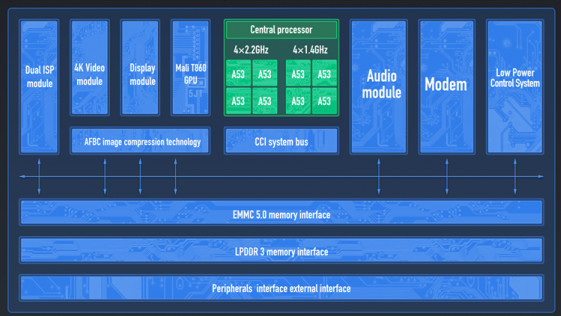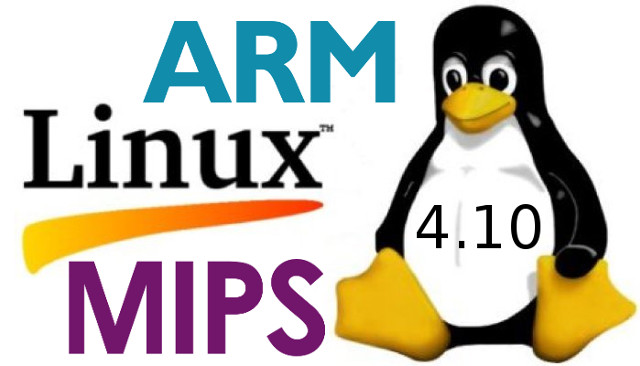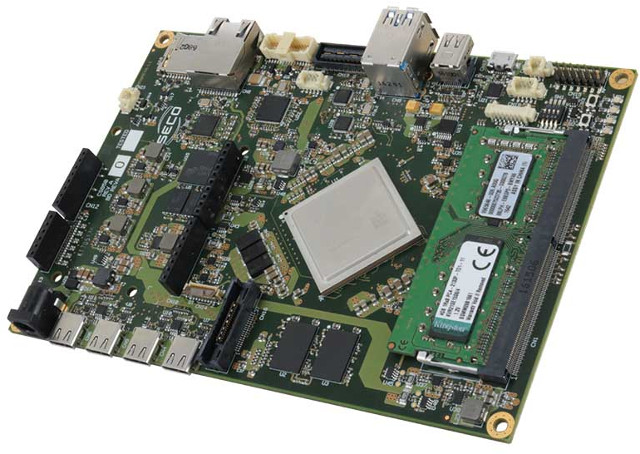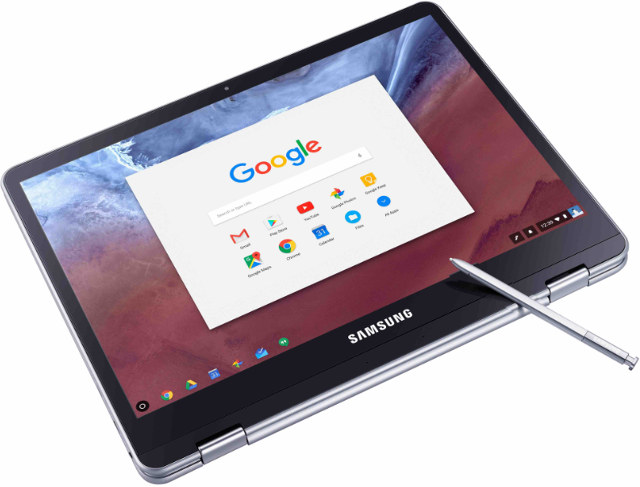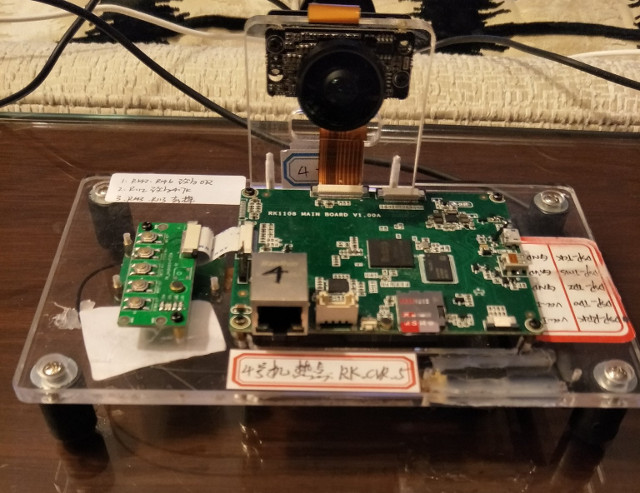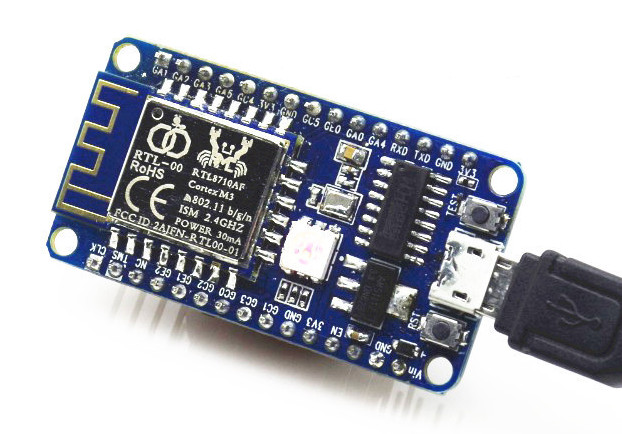Xiaomi may be skipping Mobile World Congress 2017, but they’ve still announced their first in-house Surge S1 octa-core SoC, and Xiaomi Mi 5c powered by the processor right at the same time as the even takes place. Surge S1 processor specifications: CPU – Octa-core 64-bit chipset with 4x Cortex A53 cores @ up to 2.2GHz, 4x Cortex A53 cores @ up to 1.4GHz GPU – ARM Mali-T860 quad-core GPU with AFBC + ASTC image compression technology 32-bit high performance DSP for voice processing 14-bit dual ISP; enhanced image processing capabilities with Surge ISP algorithm improving camera light sensitivity by 150%, and dual noise reduction algorithm reducing noise and preserving image detail in low light Upgradable baseband; programmable modem, OTA upgradable VoLTE high quality call and video support Security – Chip-level security; TEE architecture, strict compliance with safety regulations 28nm High Performance Computing (HPC) process The specifications and Antutu score (64,817) […]
Linux 4.10 Release – Main Changes, ARM & MIPS Architectures
Linus Torvalds has just released Linux 4.10: So there it is, the final 4.10 release. It’s been quiet since rc8, but we did end up fixing several small issues, so the extra week was all good. On the whole, 4.10 didn’t end up as small as it initially looked. After the huge release that was 4.9, I expected things to be pretty quiet, but it ended up very much a fairly average release by modern kernel standards. So we have about 13,000 commits (not counting merges – that would be another 1200+ commits if you count those). The work is all over, obviously – the shortlog below is just the changes in the last week, since rc8. Go out and verify that it’s all good, and I’ll obviously start pulling stuff for 4.11 on Monday. Linus Linux 4.9 added Greybus staging support, improved security thanks to virtually mapped kernel stacks, […]
EU funded AXIOM Board is Powered by Xilinx Zynq UltraScale+ FPGA + ARM SoC
Back in 2015, Xilinx unveiled Zynq Ultrascale+ MPSoC combining ARM Cortex A53 & Cortex R5 cores, a Mali-400MP2 GPU, and UltraScale FPGA, and the company recently launched ZCU102 Evaluation Kit based on the SoC, which sells for just under $3,000. But if you are based in the European Union, you’ll be glad to learn about 4 millions Euros of your taxes have been spent to design a board based on the same MPSoC family as part of the AXIOM project, which was developed in collaboration with European universities and companies with the “aim of researching new software/hardware architectures for Cyber-Physical Systems (CPS) to meet the expectations” in terms of computational power, energy efficiency, scalability through modularity, easy programmability, and leverage of the best existing standards at minimal costs. AXIOM (Agile, eXtensible, fast I/O Module) board’s key specifications: SoC – Xilinx Zynq Ultrascale+ ZU9EG MPSoC with four ARM Cortex A53 cores […]
Samsung Chromebook Plus / Pro with ARM Based OP1 / Intel Core m3-6Y30 Processor to Sell for $449 and Up
Samsung Chromebook Pro was first discovered last October on some reseller’s website with a Rockchip RK3399 hexa-core processor, 4GB RAM, and a $499 price tag. The company has finally announced two new Chromebooks at CES 2016 with Chromebook Pro actually based on an Intel Core m3-6Y30 “Skylake” processor, and Chromebook Plus powered by “OP1” hexa-core ARM Cortex-A72/A53 processor. We’ll that apart from the different processor, both new Chromebook have exactly the same specifications Model Code XE513C24-K01US XE510C24-K01US Chromebook Plus Chromebook Pro Operating System Google Chrome Processor / Chipset OP1, Made for Chromebooks. Hexa-core (Dual A72, Quad A53) Intel Core M3 Processor 6Y30 (0.90 GHz up to 2.20 GHz, 4 MB L3 Cache) Graphic Internal Graphics Intel® HD Graphics 515 Display 12.3″ 2400×1600 LED Display (3:2 aspect ratio) with Touch Screen Panel Memory 4GB LPDDR3 Memory (on BD 4GB) Hard Drive 32GB e.MMC Color Platinum Silver Multimedia Internal Dual Array Digital […]
Rockchip RV1108 Visual Processor is Designed for 1080p & 2K Camera Applications
Rockchip has joined other companies in developing camera SoCs with their RV1108 Visual Platform based on a single Cortex A7 core, a CEVA XM4 visual processing DSP, and capable of H.264 video encoding up to 1440p30 / 1080p60. Rockchip RV1108 main features and specifications: CPU – ARM Cortex A7 @ up to 1.0 GHz DSP – embedded CEVA XM4 vision processor up to 600MHz Video Encoder – 2K/H.264, high definition & low bit rate Camera – MIPI CSI and DVP interfaces Image processing – Low-light-level night vision imaging: 8MP professional image processing unit Audio Processing – Audio Codec supporting up to 8-way MIC array, 3A? phonetic algorithms, such as echo cancellation, noise suppression; Video Out/Input – HDMI OUT, CVBS OUT, MIPI DSI, CVBS IN Networking – 10/100 Ethernet PHY The processor is expected to be used in drones, IP cameras, car dashcams, sports/action cameras, as well as other applications such […]
$10 RTLDuino is an Arduino Compatible WiFi IoT Board based on Realtek RTL8710AF WiSoC
Last summer, we discovered a cheap RTL8710AF WiFi module with many of the same function as ESP8266, but with an ARM Cortex M3 core instead. The only problem is that it was not quite as easy to play with as ESP8266 boards, as at the time I started by playing with AT commands with B&T RTL00 RTL8710AF module, and later on, I got a more convenient PADI IoT Stamp with breakout board, but if you wanted to change the firmware you had to play with the SDK and a J-Link SWD debugger. Realtek RTL8710AF did not offer the convenience of Arduino IDE program like its big brother “RTL8195AM” from the same Ameba family. I know mbed is being worked on, but in the meantime things have changed for the better, as kissste informed me that RtlDuino implementation added Arduino support to RTL8710AF and RTL8711AM modules, and an NodeMCU-like board with […]
Qorvo GP695 “Smart Home” SoC Integrates 802.15.4, Zigbee 3.0, Thread, and Bluetooth LE
GreenPeak Technologies ultra-low power, short range RF communication technology company was acquired by Qorvo last year, and Qorvo has recently announced a GP695 system on chip (SoC) for smart home devices part of GreenPeak’s previous family of devices, and supporting multiple short range RF protocols. GP695 key features: MCU Core – ARM Cortex M4 Connectivity IEEE 802.15.4 ZigBee 3.0 Thread Bluetooth Low Energy (BLE) Qorvo Wi-Fi interference mitigation technology GP695 has been designed to be used in device such as a door locks, smart HVAC, smart security systems, connected video doorbells and intercoms, lightbulbs, smoke alarms, and leak detectors, and complements GP712 multi-protocol SoC designed for smart home gateways. Qorvo will feature live demonstrations of its smart home and IoT solutions at its booth during CES 2017, at Sands Expo, Halls A-D Booth #42114. There’s very limited public information, and no product page could be found in their website. Jean-Luc […]
Allwinner V3s Dual Camera SoC Comes with 64MB DRAM
Most SoCs have a very limited amount of internal SDRAM just enough to load the bootROM code, but a few integrated a few MB of RAM on-chip such as Renesas RZ/A1H with 10MB on-chip DRAM, in order to reduce costs for some applications that may not require external RAM. Allwinner V3s, designed for dual camera solutions, appeared to be such an SoC with 64MB (512Mbit) on-chip DDR2 RAM, but the block diagram seems to imply it is a System-in-Package (SiP) instead. Nevertheless you still get a single chip with an ARM Cortex A7 processor, two ISPs, a video engine, 64MB RAM, and more. Allwinner V3s main features & specifications: CPU – ARM Cortex-A7 @ up to 1.2 GHz Memory – Integrated 64MB DDR2 DRAM Storage I/F – SD 2.0, eMMC 4.41, SPI NAND flash, SPI NOR flash Audio Codec – 92dB audio codec supporting 2x ADC channels and 2x DAC […]


